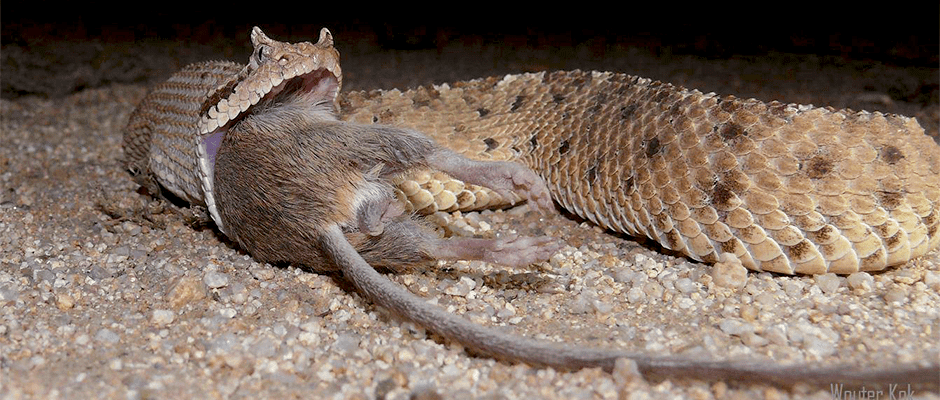Share this article
Rattlesnakes may be overlooked seed dispersers
When researchers were looking at the digestive tracts of three desert-dwelling rattlesnake species to learn about their diets, they were surprised to find little black dots in the upper intestine of one snake under a microscope.
Those dots turned out to be seeds. Since seeds are not part of the snakes’ natural diet, researchers realized, they were likely from the rodents they were consuming.
Even more intriguing, some of the seeds were about to sprout in the snake’s colon — the last place the food travels before becoming waste. Could rattlers — which can travel five to 10 times farther than known seed dispersers such as kangaroo rats (Dipodomys) or pocket mice (Chaetodipus) — be dispersing seeds, too, only through their feces?
“We were super excited,” said Harry Greene, a Professor Emeritus of ecology and evolution biology at Cornell University and co-author of a recent study published in Proceedings of the Royal Society B.
“We had the natural history to prove this does happen in nature,” said Greene, noting a past experiment that showed that feeding captive African snakes fruit resulted in seeds in their feces.
In their study, Greene and his colleagues examined 50 snake specimens including sidewinders (Crotalus cerastes), Mojave rattlesnakes (Crotalus scutulatus) and speckled rattlesnakes (Crotalus mitchellii) from the Museum of Vertebrate Zoology at University of California at Berkeley. They found rodent remains in 45 of them, and 970 seeds in the snakes’ digestive systems. In a number of the specimens, seeds were already germinating in the colons.
The rattlers not only dispersed the seeds, Greene said. Since they can’t digest the seeds themselves, they protected the seeds from being digested by their rodent prey.
It’s just another example of the important role snakes play in their ecosystem, Greene said. Like pollinators, he said, they provide ecosystem services for people and for other species.
The research is also an example of paying attention to new discoveries when conducting research, Greene said. When his team opened up snake digestive tracts, they had no plan to study seed dispersal, he said, and no idea they were about to make such a new discovery.
“There are all these secrets still out there and unknown things about nature,” Greene said. “As much as modern science is driven by testing hypotheses, it’s also driven by discovery of unexpected phenomena.”
Header Image: A Sonoran sidewinder rattlesnake consumes a kangaroo rat. Researchers found snakes can disperse seeds that the rats were storing in their cheeks. ©Wouter Kok








